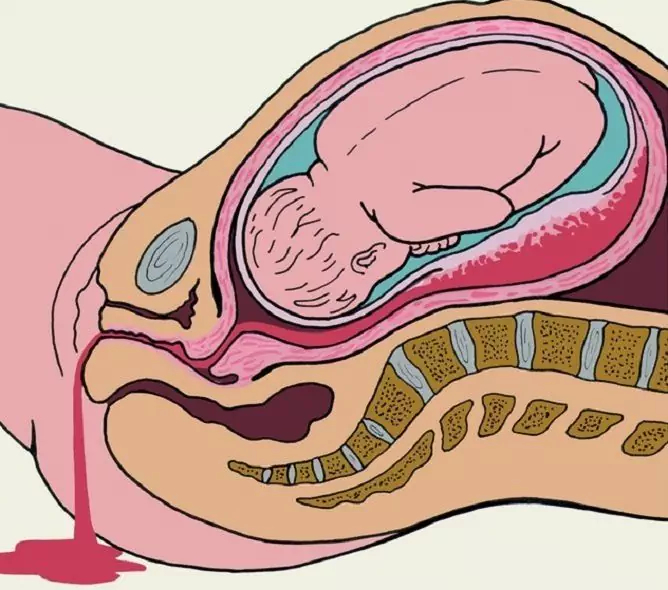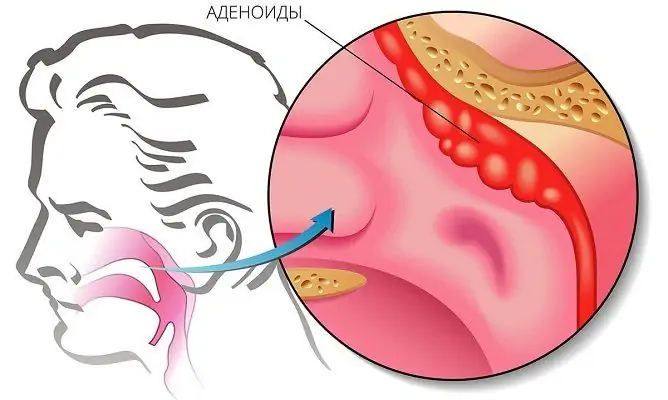- Author Rachel Wainwright [email protected].
- Public 2023-12-15 07:39.
- Last modified 2025-11-02 20:14.
Kaposi's sarcoma

The terrible disease "Kaposi's sarcoma" was named after Moritz Kaposi, the Austrian dermatologist who discovered this type of skin disease. It is a tumor that develops from the cells of the blood vessels of the skin.
Kaposi's sarcoma is characterized by the appearance of red-brown spots on the skin, with pronounced edges. First of all, it is a malignant tumor (malignant neoplasm of the dermis), which means that it poses a threat to human life.
According to the main features, there are 2 forms of Kaposi's sarcoma:
Those with Kaposi's sarcoma are elderly people of European countries. The tumor is malignant, grows slowly and is localized in one place, practically not spreading to other parts of the body
Children and young people living in Central Africa are victims of Kaposi's sarcoma. Kaposi's sarcoma of the second type "attacks" the internal organs and lymph nodes, while often affecting the dermis. People with AIDS are also at risk
Kaposi's sarcoma symptoms
Kaposi's sarcoma can affect both the skin and internal organs and lymph nodes. At the first symptoms of Kaposi's sarcoma, a brown spot may appear on one of the "favorite" places of the disease: on the feet, hands, legs. The spot is small, and only over time can it make itself felt, causing slight tingling and itching. Then the stain becomes brighter and begins to swell, becoming smooth or rough to the touch. Hemorrhage and pigmentation are also possible.
The development of a symptom of Kaposi's sarcoma can also take place according to another "scenario": a purple oval-shaped spot appears on the face, gradually develops and spreads to the lymph nodes and internal organs, causing internal bleeding.
It is customary to distinguish between three clinical stages of the development of Kaposi's sarcoma:
- Spotted - the initial stage of the disease, in which pink spots with a diameter of 1-5 mm have just formed. The surface of the spots is even, smooth.
- Papular - elements of Kaposi's sarcoma, still isolated from each other. They continue to grow, reaching a diameter of 1 cm. When the elements merge, plaques are formed, smooth or rough to the touch.
- Tumor - the formation of nodes, which later merge. Diameter up to 5 cm.
The symptoms of Kaposi's sarcoma may not always be the same in all patients. The disease can proceed in an acute form, which implies the rapid development of the disease and death. The subacute form of Kaposi's sarcoma proceeds a little more slowly, within 2-3 years without treatment. The chronic form of Kaposi's sarcoma is considered benign and therefore treatable.
Causes of Kaposi's sarcoma
For a long time, scientists believed that the main reason for the appearance of Kaposi's sarcoma is a special type of herpes. But by itself, he cannot provoke the disease. It is all the fault of a violation of the immune system of HIV-positive people. In such a "favorable" environment, the herpes virus actively multiplies, thereby causing cancer.
Treatment of Kaposi's sarcoma

In the process of spreading Kaposi's sarcoma, other areas of the skin may be involved: upper limbs, face, genitals. Therefore, the sooner you see a specialist, the sooner a diagnosis will be made and treatment prescribed.
One of the methods of treating Kaposi's sarcoma can be applied: local treatment or systemic.
Local treatment of Kaposi's sarcoma involves the use of radiation and surgical methods, cryotherapy, injection of chemotherapy drugs into the tumor itself. It should be noted that the radiation method is applicable to all types / types of tumors.
Systemic treatment of Kaposi's sarcoma can be feasible only in the absence of any disorders in the immune system. But HIV-infected people also have the opportunity to receive systemic treatment - in this case, systemic chemotherapy is performed. However, the negative effect on the bone marrow of such "therapies" does not mean that this method is safe and guaranteed to be effective.
Prevention of Kaposi's sarcoma
Kaposi's sarcoma ranks 1st in the world among malignant neoplasms of the dermis. The risk group includes:
- HIV - infected men;
- Elderly men over 50;
- Residents of Central Africa;
- Recipients.
There are 12 times more men with Kaposi's sarcoma than women.
YouTube video related to the article:
The information is generalized and provided for informational purposes only. At the first sign of illness, see your doctor. Self-medication is hazardous to health!






